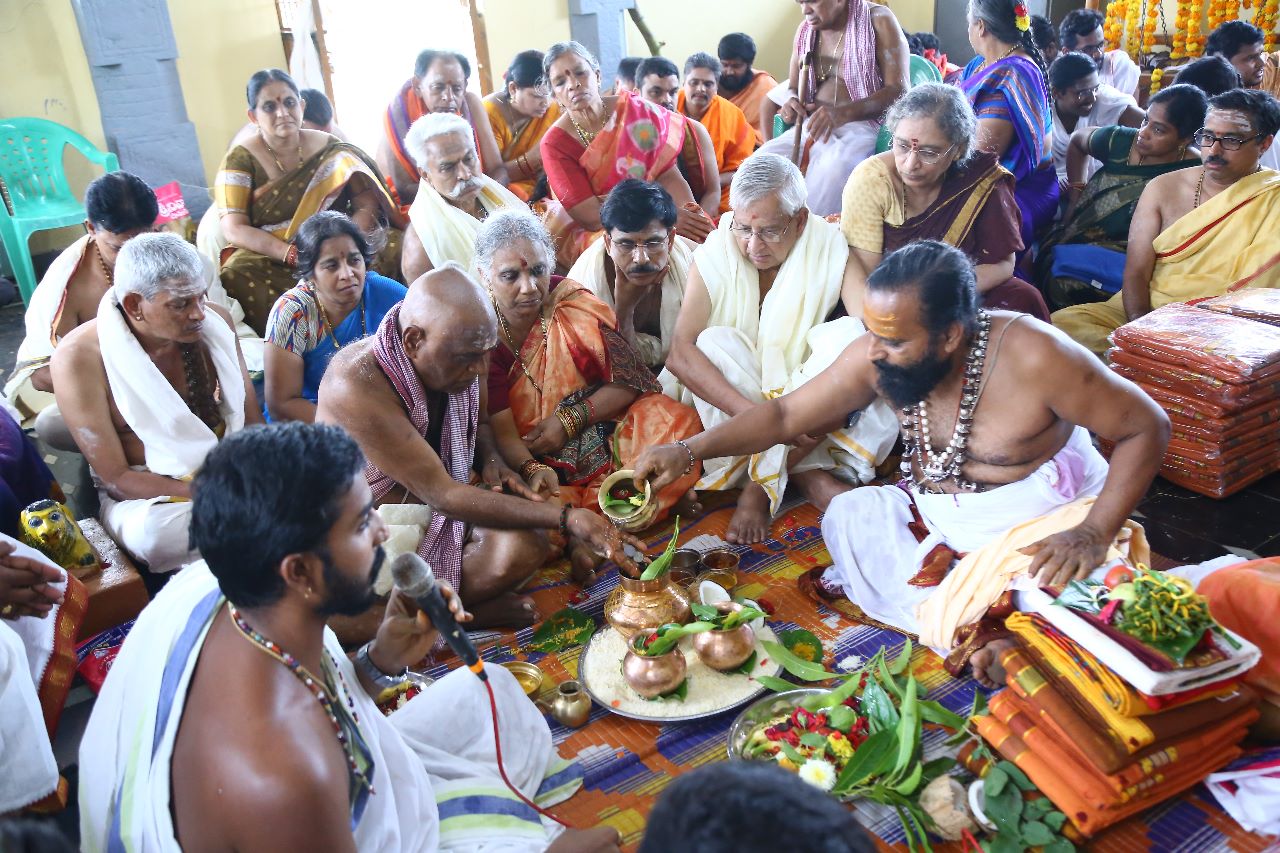Visesha Pooja is a sacred and devotional ritual that allows devotees to connect with the divine, seek blessings, and experience spiritual upliftment. Through its elaborate rituals and offerings, Visesha Pooja creates an atmosphere of devotion, tranquility, and divine grace within the temple premises. It serves as a profound reminder of the eternal bond between the devotee and the divine, fostering a deeper understanding of one’s spiritual journey and the pursuit of inner bliss and enlightenment.
Purpose and Significance of Visesha Pooja:
- Devotional Offering: Visesha Pooja allows devotees to offer their sincere prayers, love, and gratitude to the deity. It is a way of expressing deep devotion and surrendering oneself to the divine power. Through this ritual, devotees seek blessings for spiritual growth, well-being, and fulfillment of their desires.
- Divine Connection: Visesha Pooja serves as a means to establish a personal connection with the presiding deity of the temple. It provides an opportunity for devotees to experience a direct communion with the divine, fostering a sense of inner peace, harmony, and spiritual upliftment.
- Cleansing and Purification: The rituals performed during Visesha Pooja involve purification ceremonies that aim to cleanse the physical and spiritual realms. Devotees believe that participating in these rituals helps to purify their minds, bodies, and souls, enabling them to overcome obstacles, negative influences, and past karmas.
- Blessings and Protection: Visesha Pooja is believed to invoke the divine blessings and grace of the deity. Devotees seek protection from negative energies, ailments, and hardships, while also seeking guidance, wisdom, and success in their endeavors.
The Rituals of Visesha Pooja:
- Abhishekam (Holy Bath): The deity is bathed with sacred substances, such as milk, honey, ghee, and water, symbolizing purification and sanctification. This process is accompanied by the chanting of mantras and prayers.
- Alankaram (Adorning): The deity is adorned with beautiful garments, jewelry, and flowers, signifying the manifestation of divine beauty and grace. The exquisite decoration enhances the visual appeal and represents the honor and reverence offered to the deity.
- Archana (Offerings): Devotees offer flowers, fruits, incense, and other symbolic items to the deity as a gesture of devotion and gratitude. Each offering is accompanied by the recitation of the deity’s sacred names and mantras.
- Deepa Aradhana (Worship with Lamps): Lamps are lit to illuminate the divine presence and dispel darkness. The flickering flames symbolize the triumph of light over ignorance and the divine presence illuminating the devotee’s path.
- Naivedyam (Food Offering): Devotees present a variety of specially prepared food items as an offering to the deity. It is believed that the deity partakes in the essence of the offering, sanctifying it, and blessing the devotees with nourishment and abundance.
Conclusion: Visesha Pooja is a sacred and devotional ritual that allows devotees to connect with the divine, seek blessings, and experience spiritual upliftment. Through its elaborate rituals and offerings, Visesha Pooja creates an atmosphere of devotion, tranquility, and divine grace within the temple premises. It serves as a profound reminder of the eternal bond between the devotee and the divine, fostering a deeper understanding of one’s spiritual journey and the pursuit of inner bliss and enlightenment.



